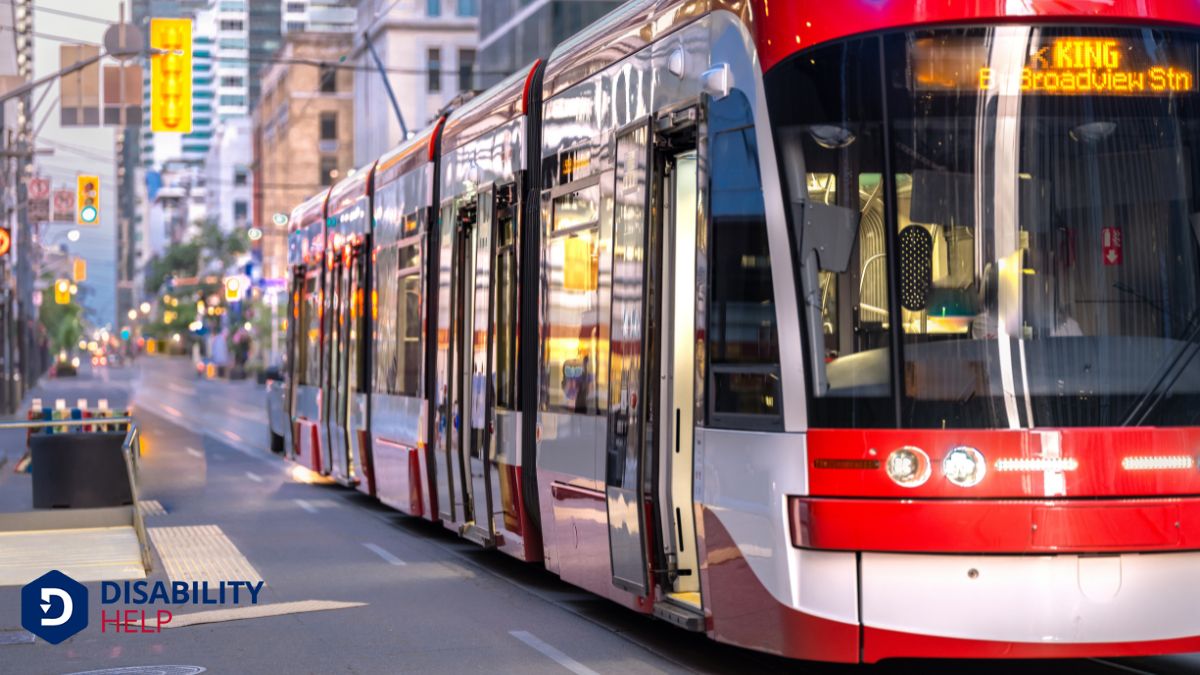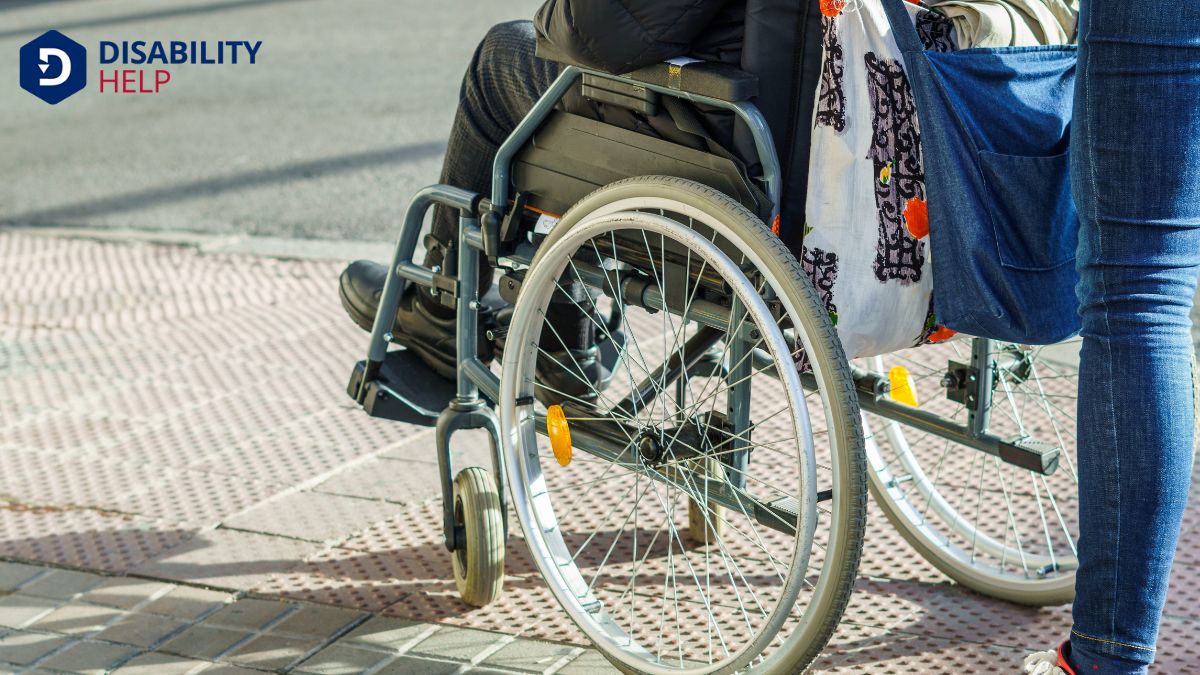When it comes to public transportation, there are several options available for wheelchair users that guarantee accessibilityThe design of products, devices, services, or environments to be usable by people with disabilities.... and convenience. Many of us may not realize just how much has been done to accommodate those with mobility challenges. From buses and trains to paratransit servicesTransportation services designed to accommodate individuals with disabilities who cannot use regular..., the options are diverse and practical. But what exactly makes these modes of transport wheelchair-friendly, and how can they be improved even further? Let's explore the details.
Key Takeaways
- Buses and coaches often have lifts or ramps and designated wheelchair spaces for accessible boarding.
- Trains offer ramps, level boarding platforms, and designated seating areas for wheelchair users.
- Trams feature low-floor designs and real-time updates for easy access and trip planning.
- Paratransit services provide door-to-door transportation for those unable to use regular transit.
- Mobile apps assist in planning accessible routes with information on ramps and elevators.
Overview of Accessibility in Public Transportation

Although public transportation has made strides in accessibility, there's still a lot to contemplate when it comes to truly accommodating wheelchair users.
We've noticed improvements in infrastructure, like ramps and elevators at stations, allowing smoother movements onto platforms. However, we must consider the challenges that persist.
For instance, not all stations or stops have these features, making travel unpredictable. We often encounter issues with space allocation on trains, trams, and subways. Limited designated areas can make it difficult for us to find a spot, especially during peak hours.
Additionally, the reliability of accessibility features can be inconsistent; elevators and ramps might be out of service unexpectedly.
As we advocate for better solutions, let's prioritize consistency and accessibility across all public transportation networks.
Wheelchair Accessible Buses and Coaches
As we explore wheelchair-accessible buses and coaches, it's important to understand the boarding and seating options available to us.
These vehicles often feature lifts or ramps, making it easier for wheelchair users to board without hassle.
Once on board, designated seating areas guarantee that we can travel comfortably and safely.
Boarding and Seating Options
When considering wheelchair accessible buses and coaches, it's important to understand the boarding and seating options available to guarantee a smooth and comfortable journey.
We want to make certain that everyone feels confident and informed before traveling. Most buses and coaches feature designated spaces for wheelchairs, often located near the front for easy access. These spaces usually have safety straps and securement systems to keep the wheelchair stable during transit.
It's vital for us to know that some seats can fold up to make room for a wheelchair, which provides flexibility.
We should also check if there's enough room to maneuver easily to the designated space. By being aware of these options, we can plan our trips with greater ease and confidence.
Lift and Ramp Features
To guarantee wheelchair users can board buses and coaches with ease, lift and ramp features are essential. These vital components guarantee accessibility and independence for individuals who rely on wheelchairs.
We often find that ramps are integrated into the vehicle design, allowing seamless entry and exit. They're typically foldable or extendable, making them convenient for quick deployment.
Lifts, on the other hand, provide a mechanical solution, raising and lowering wheelchairs safely.
It's important for us to remember that these features not only accommodate wheelchair users but also offer peace of mind to everyone using public transportation.
When buses and coaches are equipped with reliable lifts and ramps, they reflect a commitment to inclusivity. Let's advocate for these features in all public transit systems.
Train Services With Wheelchair Accommodations
When we think about train travel, it's important to take into account how accessible it's for wheelchair users.
Many train services now offer features like ramps and lifts to assist with boarding, ensuring a smoother journey for everyone.
Additionally, in-train mobility aidsDevices designed to help individuals move around more easily, such as canes, walkers, or wheelchairs..., such as designated spaces and accessible restrooms, make trips more comfortable and inclusive for wheelchair users.
Accessible Boarding Features
Although train travel offers a convenient way to traverse long distances, guaranteeing accessibility for wheelchair users is essential.
Let's explore how accessible boarding features can make this possible. Many train services now include ramps or lifts, allowing us to board the train smoothly. It's vital that stations have level boarding platforms; this minimizes gaps between the platform and train, making it safer and easier for wheelchair users to access the train.
Additionally, some trains come equipped with designated boarding areas, specifically designed for passengers requiring extra assistance. These features guarantee that boarding is a seamless experience.
It's important to check in advance if these accommodationsModifications or adjustments in healthcare settings to support patients with disabilities. are available on our route, as accessibility can vary between different train services and regions.
In-Train Mobility Aids
As we continue our journey on accessible trains, it's crucial to understand the in-train mobility aids designed for wheelchair users. These aids help guarantee a comfortable and safe experience.
Many trains offer designated wheelchair spaces, providing ample room for maneuvering and securing wheelchairs during transit. These spaces often have anchors or straps to stabilize wheelchairs, preventing movement during travel.
Additionally, trains may feature accessible restrooms with wider doors and grab barsBars installed in bathrooms or other areas to provide support and prevent falls for those with mobil... for added support.
Some modern trains even include visual and audio announcements, making it easier for us to stay informed about upcoming stops.
In-train staff are usually trained to assist with any needs we might have, guaranteeing a smooth ride. Understanding these features helps us travel confidently and independently.
Trams and Light Rail Systems for Wheelchair Users
Trams and light rail systems are vital for guaranteeing accessible transportation for wheelchair users, and they often provide a more comfortable and efficient travel experience.
We should focus on how these systems cater to our needs. Most modern trams have low-floor designs, making it easier for us to board without assistance. They usually include dedicated spaces for wheelchairs, making sure we're secure during the ride. Ramps or level boarding platforms further aid our access, promoting independence.
When planning our trips, it's important to check for real-time updates on tram schedules and any potential service disruptions.
Many cities have apps or websites that provide this information, making our journey smoother. Let's take advantage of these resources to guarantee stress-free travel.
Accessibility Features in Subway Systems
Maneuvering subway systems can be challenging, but many have made significant strides in improving accessibility for wheelchair users.
Elevators, ramps, and accessible ticket machines are becoming standard features in modern stations. We need to know what to look for to guarantee a smooth journey.
Here are a few essential elements to take into account:
- Elevators: Essential for accessing platforms, elevators should be well-maintained and clearly marked.
- Platform Gaps: Many systems now offer bridging devices or gap reducers to guarantee safe boarding.
- Visual and Audio Announcements: These help us stay informed about stops and any service changes.
Paratransit Services and On-Demand Options
When it comes to increasing independence for wheelchair users, paratransit services and on-demand options offer essential alternatives to traditional public transportation.
Paratransit services, often operated by local transit agencies, provide door-to-door rides for those unable to use regular buses or trains. These services are usually scheduled in advance, ensuring we've reliable transportation tailored to our needs.
On-demand options, like accessible ride-hailing services, add flexibility. With a smartphone app, we can request a ride that accommodates wheelchairs, making spontaneous travel possible.
Some cities even have partnerships with companies like Uber and Lyft to offer these services. By combining advanced booking with on-demand convenience, these options expand our mobility, empowering us to navigate our communities with greater ease and independence.
Innovations in Wheelchair-Friendly Transportation
Although traditional modes of transport have often posed challenges for wheelchair users, recent innovations are transforming accessibility.
We're witnessing a shift towards more inclusive public transportation systems. Technological advancements are paving the way for better experiences and increased independence.
Consider these exciting innovations:
- Autonomous Vehicles: Self-driving shuttles with adaptive entry systems offer seamless travel.
- Smart Wheelchairs: These integrate with public transport networks, providing real-time data and route optimization.
- Mobile Apps: They're designed to assist in planning accessible routes, detailing features like elevator availability and ramp locations.
These solutions aren't just about technology but about creating environments where everyone, regardless of mobility, can navigate with ease.
It's essential we continue to support and expand these innovations to foster true accessibility.
Addressing Challenges and Improving Accessibility

While strides have been made in creating more accessible public transportation, challenges still remain that we must address to guarantee inclusivity for all.
Uneven sidewalks, outdated buses, and poorly maintained elevators can hinder wheelchair users from traveling independently. We need to focus on consistent maintenance and upgrades to infrastructure, ensuring these services remain reliable.
Listening to the voices of wheelchair users is essential. They know firsthand what works and what doesn't, so including them in planning and decision-making processes can lead to better solutions.
Additionally, we should advocate for thorough training programs for transit staff, emphasizing empathyThe ability to understand and share the feelings of another, particularly important in understanding... and understanding of accessibility needs.
Conclusion
In exploring public transportation options for wheelchair users, we've seen how accessible buses, trains, trams, and paratransit services make travel possible for everyone. With innovations like smart wheelchairs and mobile apps, we're enhancing convenience and accessibility. Although challenges remain, we're committed to improving the system for all users. Let's continue advocating for inclusivity and accessibility in transportation, ensuring that individuals with mobility challenges can travel comfortably and confidently. Together, we can make a difference.






